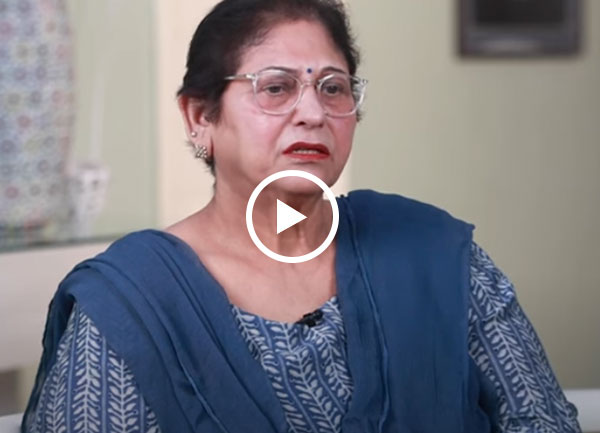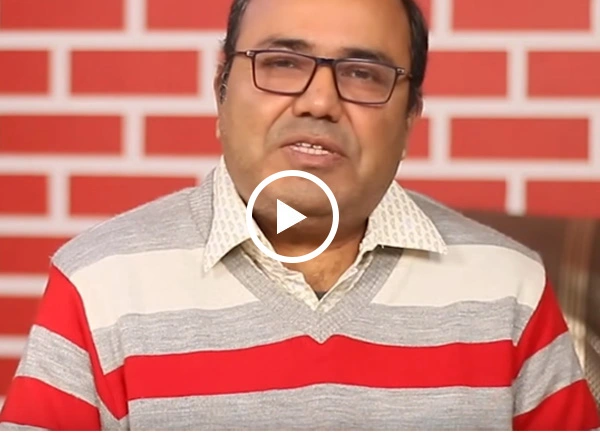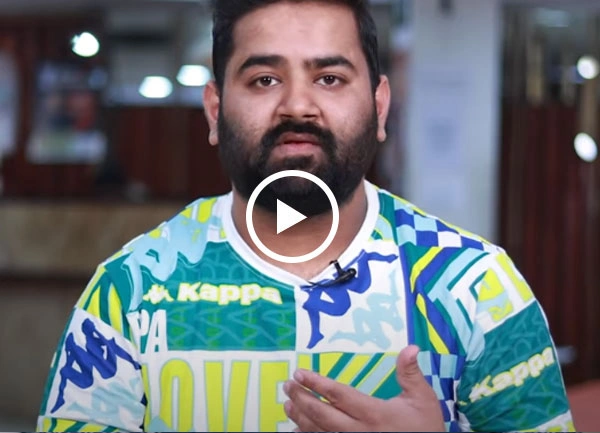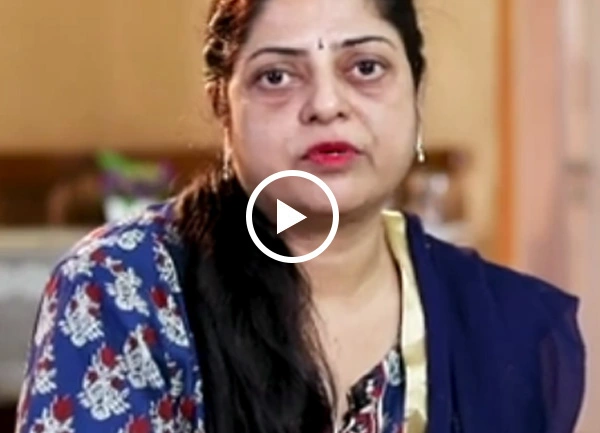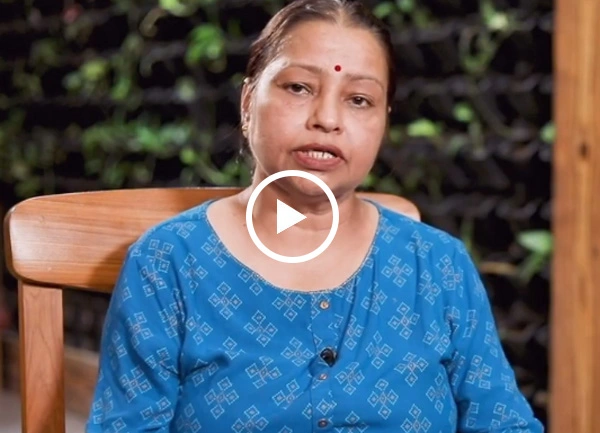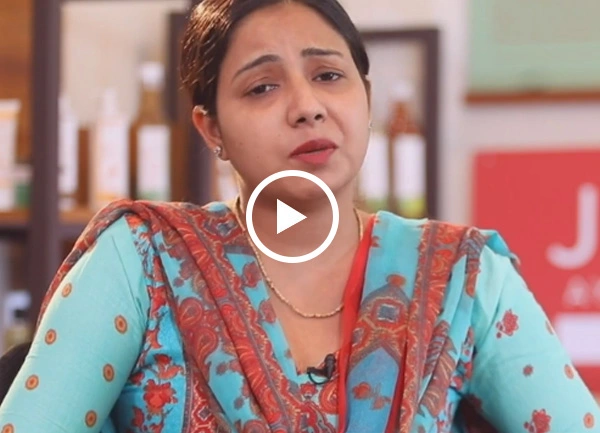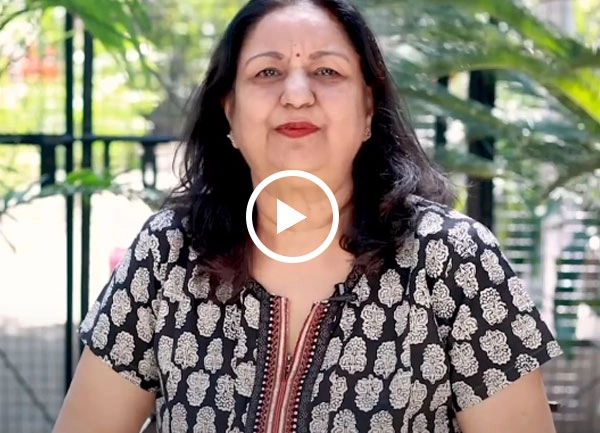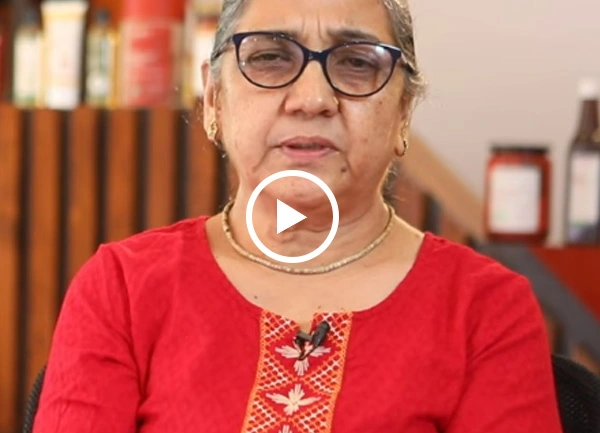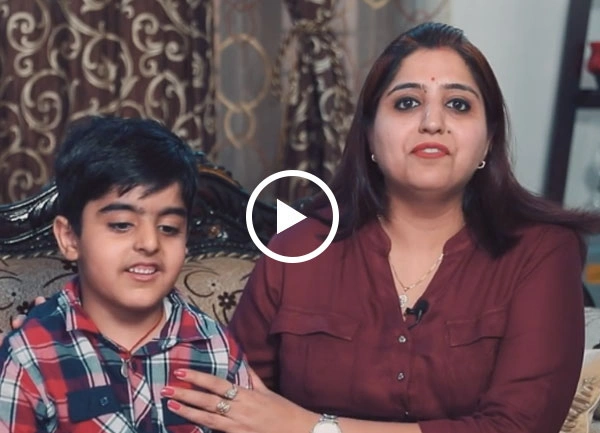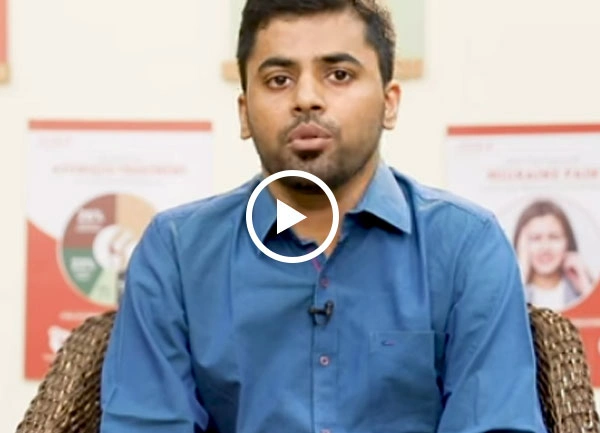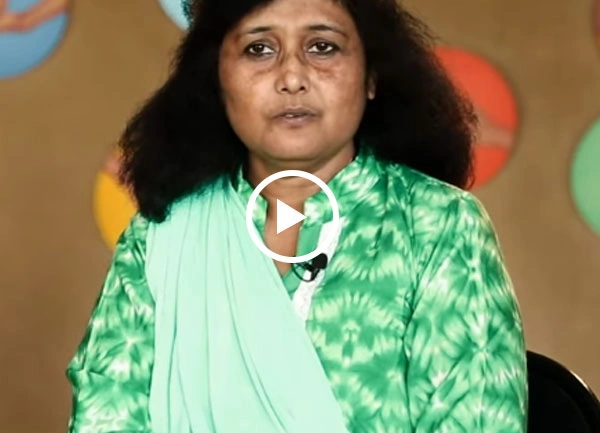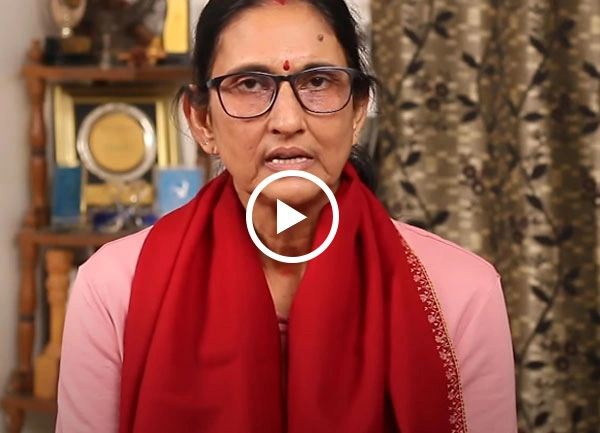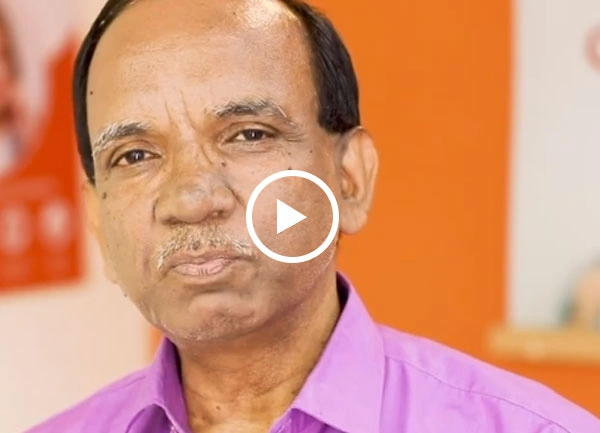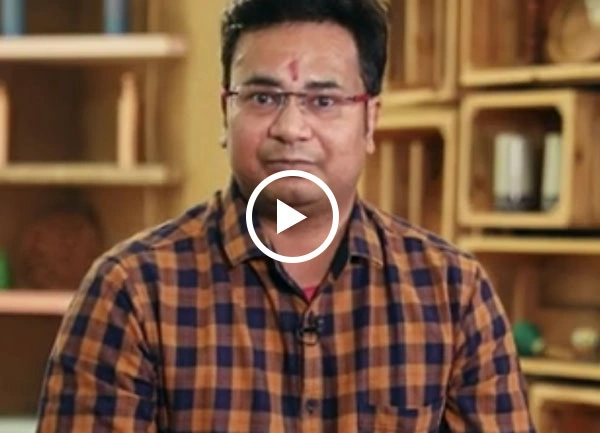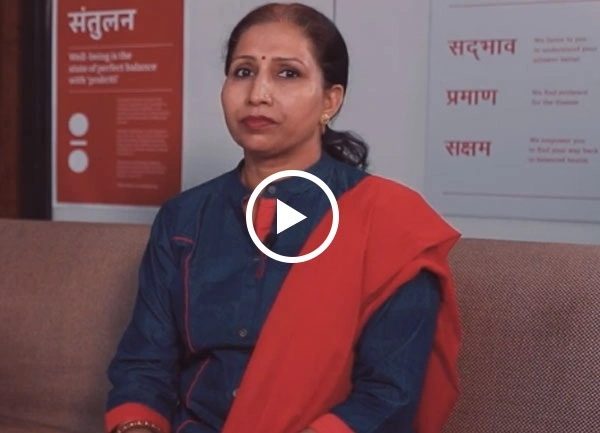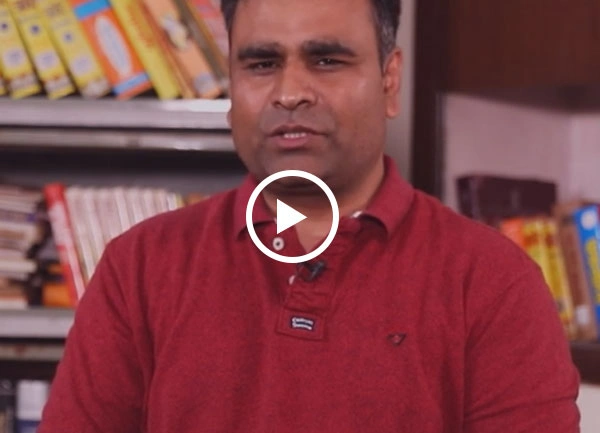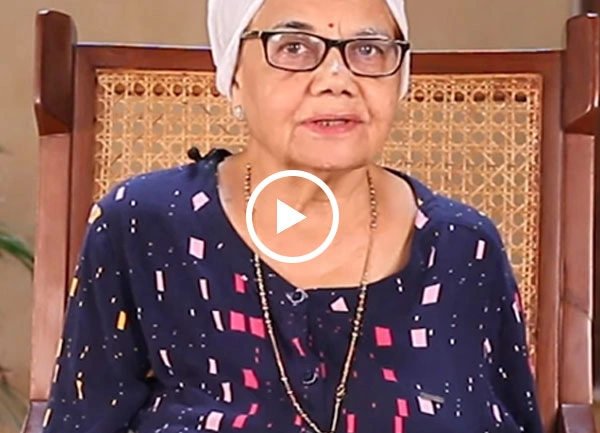

Successful Treatments
Clinics
Doctors
What is Glaucoma?
Glaucoma is a host of conditions that cause damage to the optic nerve, usually due to abnormally high pressure inside the eye. This is a result of too much fluid production or less-than-ideal drainage of aqueous humor; commonly referred to as Intraocular Pressure.
The optic nerve carries visual information back to the brain. This nerve, when damaged, may cause loss of vision permanently. At its extreme, an untreated case might even lead to complete loss of sight. Several forms of Glaucoma have been identified, and it is open-angle Glaucoma that is most commonly developed.
In Ayurveda, glaucoma is similar to ‘Adhimantha’; caused mainly by an imbalance of your body's natural energies or doshas. Ayurveda considers that glaucoma usually begins with Abhishyanda (inflammation and blockage of eye channels). This blockage causes accumulation of toxins in your body and in the channels of your eyes. When this occurs, pressure builds up in your eyes and damages your optic nerve.
Mostly, open-angle Glaucoma begins as a slow-occurring, pain-free disease process without easily notable symptoms. Likewise, angle-closure Glaucoma tends to develop acutely with sharp ocular pain, hazy vision, and nausea. A prompt eye examination can help with appropriate diagnosis of Glaucoma at an early stage.
What Are the Types of Glaucoma?
You may not know this but glaucoma actually is a very complicated health condition. There are many kinds of Glaucoma and understanding which one you have can help you and your doctor choose the best treatment. The primary types you should know about are:
1. Open-Angle Glaucoma
The most common type is open-angle glaucoma. This is the most common among adults. In this, you won't usually feel pain or have symptoms early on. The drainage channels in your eye stay open but the fluid does not drain out. This eventually builds up pressure and damages your optic nerve. You might lose your side (peripheral) vision first. This can be caught early with routine eye checkups.
2. Angle-Closure Glaucoma
This is a less common but more serious type. It occurs when the drainage angle becomes blocked suddenly in your eye. You might suddenly experience severe eye pain, headaches, blurry vision or halos around lights. Some people also feel nauseous or vomiting. This is considered a medical emergency and you should immediately get help to avoid permanent vision loss.
3. Normal-Tension Glaucoma
In this case, your eye pressure stays normal but your optic nerve is damaged. Doctors do not understand why this happens although it's more typical if you have a family history of glaucoma or thin corneas.
4. Secondary Glaucoma
This type generally happens because of other health problems like diabetes, eye injuries, or due to certain medicines like steroids. As per Ayurveda, this kind of glaucoma can be best controlled by dealing with the underlying problem.
5. Congenital Glaucoma
This is a rare form of glaucoma seen in children and babies. You may notice your child has cloudy eyes, large-looking eyes, is frequently tearing or facing light sensitivity. You should always get this treated early to preserve their sight.
Types of Glaucoma as per Ayurveda
Ayurveda classifies glaucoma into several types depending on which dosha is most disturbed:
- Vataja Adhimantha: In this, you may feel dryness, roughness, pain around the eyes and forehead and also experience hearing disturbances.
- Pittaja Adhimantha: In this type, you may experience redness, burning sensations, swelling of eyelids, yellow vision, headaches and fainting.
- Kaphaja Adhimantha: In Kaphaja Adhimantha, you might feel heaviness, coldness, excessive tearing, itching and a sticky feeling in your eyes.
- Raktaja Adhimantha: Your eyes may be red and sensitive, and sometimes it may bleed with severe inflammation.
Common Causes of Glaucoma
Glaucoma is basically caused by the inflammation of the optic nerve in your eye, usually because of high pressure within the eye. This damage can steal your vision, starting from the edges and moving inwards. Let us understand why this problem occurs.
Fluid Buildup Inside the Eye: Your eye makes a fluid called aqueous humor that is important for your eye health. This fluid drains out via a trabecular meshwork drainage system. If the fluid drains too slowly or not at all, the pressure within your eye rises. This increased pressure eventually damages your optic nerve.
Common Risk Factors of Glaucoma
The risk of developing glaucoma may be greater in case :
- You have a family history of glaucoma, particularly siblings.
- You are more than sixty years old.
- You have a thinner cornea than normal.
- You have a large or a thin optic nerve.
- You are of Asian origin (higher angle-closure glaucoma risk).
- You have long used steroid medications.
- You had previous eye injuries or surgeries.
Symptoms
Loss of peripheral vision
You may first experience blurry side vision, which we call peripheral vision. It might feel like you're looking through a narrow tunnel but your main vision is still clear.
Seeing halos around lights
In glaucoma, you may see rainbow-coloured rings or halos around lights, mostly at night. This can make night driving difficult or uncomfortable.
Eye redness and pain
As pressure builds inside your eyes, you may experience heaviness, pain, or redness around your eyes.
Headaches & Nausea
In extreme cases, glaucoma can lead to severe headaches mostly around the eyes. The pain may be so severe that it can cause vomiting or nausea.
Gritty or dry eye sensation
You may feel as if you have sand or dust in your eyes. Some people also report dryness and discomfort.
Sudden vision loss
If you experience a sudden and severe visual loss in one or both your eyes, this may indicate acute angle-closure glaucoma. This is a medical emergency that needs urgent attention.
Signs In children
In babies or young children, glaucoma can lead to cloudy eyes, excessive tearing and extreme sensitivity to light.
Common symptoms of glaucoma based on different types are:
Open-angle Glaucoma
The peripheral vision is slowly lost, tunnel vision in advanced stages.
Angle-closure Glaucoma
Acute eye pain, nausea and vomiting, sudden blurring of vision, seeing halos around lights, red eyes.
Congenital Glaucoma
Over-production of tears, sensitivity to light, bulging eyes.
Jiva Ayunique™ Treatment Philosophy - A Holistic Approach to Glaucoma
Jiva Ayurveda offers holistic Ayurvedic treatment of Glaucoma using time-tested Ayurvedic methods. Our treatment plans are made in a customised manner to target the underlying causes of Glaucoma, and instead of just treating symptoms, they focus on holistic healing, balance, and stability.
Core Principles of the Jiva Ayunique™ Treatment Philosophy
- Scientifically prepared Ayurvedic medicines (HACCP certified): Specially made herbal combinations that support your body’s natural balance and help calm your mind and emotions.
- Yoga, Meditation, and Mindfulness: Gentle and effective ways to relax, reduce stress, and improve your complete mental and emotional health.
- Traditional Ayurvedic Therapies: Natural treatments like Panchakarma and therapeutic massages that cleanse your body of toxins and bring your inner energies into balance.
- Healthy Diet and Lifestyle Guidance: Personalised advice on eating habits and daily routines to help you feel your best and stay healthy in the long run.
Ayurvedic Medicines for Glaucoma
Ayurveda offers a holistic and natural approach for the management of glaucoma. Ayurvedic treatment aims to balance your body’s doshas, drain excess fluid from your eyes, reduce pressure, and prevent further damage to your optic nerve. There are some powerful Ayurvedic herbs and natural cures that have been used for centuries to support eye health and manage glaucoma symptoms. The best herbs and formulations recommended in Ayurveda are:
Punarnava (Boerhavia diffusa)
One of the main herbs used in Ayurveda for the treatment of glaucoma is punarnava. It's a great diuretic which helps drain additional fluid from the eyes. This releases pressure inside the eye and protects your optic nerve from damage. Regular use of Punarnava can also prevent fluid buildup and support eye health.
Triphala (Amla, Haritaki, Bibhitaki)
Triphala is an Ayurvedic formulation containing three fruits: Amla, Haritaki & Bibhitaki. It can be used as a health supplement and as an eyewash. Triphala lowers intraocular pressure, eases eye inflammation and strengthens your optic nerve. Also, it is a very good antioxidant that protects your eye's delicate tissues from harm.
Amla (Phyllanthus emblica)
Amla or Indian gooseberry contains a good amount of Vitamin C and strong antioxidants. It defends your retina and optic nerve from oxidative stress and damage. Amla also strengthens the tissues and improves blood circulation in your eyes, making it useful for glaucoma management.
Castor Oil
In Ayurveda, castor oil is used for eye issues. It helps to slow down the development of this condition. Castor oil is believed to aid in healthy vision and reduce dryness and inflammation. You can apply it as eye drops (under strict medical guidance) or rub it on the soles of your feet for the best results.
Sesame Oil
Sesame oil is a traditional Ayurvedic treatment for glaucoma. It is generally taken nasally (3 to 4 drops) on an empty stomach to help balance your doshas and lower eye pressure. Sesame oil also strengthens your optic nerves if it is used regularly.
Cow Ghee
Cow ghee is considered nourishing for your optic nerves. Apply 2 drops of pure cow ghee in your eyes (under expert guidance) to prevent vision loss and strengthen your eye tissues. Ghee also reduces eye irritation and soothes inflammation.
Rose Water (Gulab-jal)
Rose water is cooling and cleansing. Cleaning your eyes with rose water or putting a cotton ball with rose water over shut eyelids can reduce redness, irritation and heaviness in your eyes. It helps to relieve mild eye discomfort associated with glaucoma.
Ginkgo (Ginkgo biloba)
Ginkgo improves blood circulation to your optic nerve and the retina, decreases oxidative stress and helps to delay vision loss because of glaucoma. It is often provided as supportive therapy to elderly patients.
Bilberry (Vaccinium myrtillus)
Bilberry is a therapeutic berry loaded with the flavonoid anthocyanins. It protects retinal ganglions and stabilises the optic nerve structure. Bilberry also improves blood flow in your eyes, decreases neuroinflammation and improves resistance to pressure-related damage in eyes.
Ayurvedic medicine offers an all-rounded approach in dealing with Glaucoma as it focuses on the regulation of Doshas and promoting healthy vision. Ayurvedic remedies may include medicinal herbs such as Triphala, Amalaki, and Bibhitaki, which have been reported to have antioxidant and anti-inflammatory properties that can promote eye health.
Additionally, panchakarma therapies focus on detoxification; for instance, Virechana (purgation), Nasya, etc., can be included in the treatment, helping improve blood flow and also being instrumental in reducing the intensity of the inflammation.
Likewise, subtle lifestyle as well as dietary modifications, alongside guided stress management in the form of yoga, meditation, and eye exercises, may also be highly recommended alongside consumption and application of ayurvedic medicines for Glaucoma.
Diet & Exercise
One of the key elements of an effective evidence-based ayurvedic treatment is the importance given to the need for a well-balanced diet plan guided by a certified nutritionist, as well as effective, impactful exercise, yoga, and de-stressing therapies recommended by certified experts.
- Diet: Consumption of a diet rich in antioxidants, vitamins (A, C, E), and minerals is recommended. Inclusion of plenty of fruits, vegetables (especially leafy greens), whole grains, and omega-3 fatty acids is suggested. Additionally, limitation of saturated fats, processed foods, and excessive caffeine and alcohol is also a necessity in effective ayurvedic treatment for Glaucoma..
- Exercise: Regular moderate exercise can improve blood circulation and may even help to reduce IOP. Strenuous exercises elevate the pressure in the eyes; therefore should be avoided. Yoga and meditation are noted to reduce stress levels that contribute to Glaucoma, thus often recommended as part of a holistic treatment approach.
FAQs About Glaucoma
Can Glaucoma be cured?
No, Glaucoma cannot be cured, but its progress can be slowed or stopped with early diagnosis and effective treatment guided by specialist doctors.
Is Glaucoma hereditary?
Yes, there is a genetic susceptibility to Glaucoma. Those with a family history of Glaucoma are at a higher risk.
How often should one get an eye checkup for Glaucoma?
It is advisable to have a comprehensive eye checkup every one to two years, especially when one is over the age of 40 or has previously noted risk factors associated with Glaucoma.
Can stress be a cause of Glaucoma?
Although stress does not cause Glaucoma per se, it can certainly exacerbate the condition. Relaxation techniques to reduce stress are thus useful.
Do Glaucoma medications have any side effects?
Yes, there is are possibility for side effects of Glaucoma medications such as irritation of the eyes, redness of the eyes, blurring of vision, and a change in heart rate or blood pressure.
Can Ayurveda completely replace traditional Glaucoma treatment?
Ayurveda is not a substitute for conventional treatment, but it can definitely be used as an adjunct therapy. The treatment, therefore, should be conducted under the guidance of an ophthalmologist and a certified Ayurvedic doctor.
What are some useful eye exercises for Glaucoma patients?
Simple eye exercises like focusing on objects at different distances, doing eye rotations, and palming can increase the flexibility of the eye muscles and improve circulation.
Can diet alone control Glaucoma?
While diet plays a major role in maintaining eye health, it is unlikely that it would be able to manage Glaucoma alone. It should be a part of an effective, holistic treatment approach towards the treatment of Glaucoma.
Is Glaucoma more common among older adults?
Absolutely, the risk of having Glaucoma increases with age, especially after one reaches the age of 60.
Does smoking contribute to Glaucoma?
Yes, smoking may have the ability to increase one's chances of having Glaucoma and may make the condition worse. Smokers facing eye problems are therefore advised to quit smoking.
Top Ayurveda Doctors
Our Happy Patients
Home Remedies
- कैविटी और दाँतों की सड़न के लिए आयुर्वेदिक इलाज – बिना दर्द राहत पाएं
- आँखों में जलन या ड्राईनेस का आयुर्वेदिक इलाज - मुफ़्त परामर्श
- कान दर्द का घरेलू इलाज | आयुर्वेदिक नुस्खे जो तुरंत असर करें
- गले में दर्द और खराश? ये घरेलू नुस्खे देंगे तुरंत आराम
- Home Remedies for Tonsils
- Home Remedies for Throat Infection
- Home Remedies for Dry Eyes
- Home Remedies for Ear Pain
Related Disease
- Ayurvedic Treatment for Cataract
- Ayurvedic Treatment for Conjunctivitis
- Ayurvedic Treatment for Epistaxis
- Ayurvedic Treatment for Tonsillitis
- Ayurvedic Treatment for Stye
- Ayurvedic Treatment for Glaucoma
- Ayurvedic Treatment for Colloid Goitre
- Ayurvedic Treatment for Myopia
- Hearing Loss Treatment in Ayurveda
- Ayurvedic Treatment for Halitosis
- Ayurvedic Treatment for Pyorrhoea
- Ayurvedic Treatment for Tinnitus
- Ayurvedic Treatment for Dysphagia
- Ayurvedic Treatment for Presbyopia
- Ayurvedic Treatment for Astigmatism
- Ayurvedic Treatment for Nasal Polyps
- Ayurvedic Treatment for Adenoids
- Ayurvedic Treatment for Mumps
- Get Ayurvedic Treatment for Pharyngitis
Latest Blogs
- क्या बार-बार एंटीहिस्टामिन लेने पर भी Hives वापस आ जाते हैं?आयुर्वेद में इसके मूल कारण जानें
- क्या परफ्यूम, साबुन या धूल के संपर्क में आते ही फौरन दाने उभर जाते हैं? Urticaria में ट्रिगर्स आयुर्वेदिक दृष्टि से समझें
- क्या रात के समय खुजली और दाने अधिक बढ़ जाना Urticaria की प्रकृति दिखाता है?आयुर्वेदिक दृष्टिकोण देखें
- क्या तनाव या घबराहट बढ़ते ही Hives flare-up शुरू हो जाता है? मन-पित्त संबंध आयुर्वेद की नज़र से समझें
- क्या अचानक चेहरे, होंठ या आँखों के आसपास सूजन आना Angioedema या Urticaria का लक्षण है? – आयुर्वेदिक व्याख्या
- क्या Delivery के बाद महिलाओं में Fissure ज़्यादा देखा जाता है? आयुर्वेद बताता है कारण और देखभाल
- क्या गुदा के आसपास खिंचाव, जलन और सूजन महसूस होना Fissure की प्रगति दर्शाता है?
- क्या मल त्याग के दौरान हल्का खून आना हमेशा Piles नहीं—Fissure भी हो सकता है?
- क्या गुदा के पास हल्की दरार या चमड़ी कटना Fissure का संकेत हो सकता है?
- क्या बार-बार सूखी और कड़ी स्टूल Anal Fissure को और खराब करती है?
- क्या लंबे समय तक कब्ज़ रहने से Fissure बार-बार दोहराता है? आयुर्वेद में इसके कारण जानें
- क्या धूप, ठंड या पानी लगते ही त्वचा पर चकत्ते उभरना Urticaria की ओर इशारा करता है? आयुर्वेदिक संकेत देखें
- क्या कुछ ही मिनटों में दाने फैल जाना Hives का क्लासिक पैटर्न है? आयुर्वेद की नज़र से कारण जानें
- क्या त्वचा पर अचानक उभरने वाले लाल उभरे हुए दाने Urticaria का संकेत हैं? आयुर्वेदिक दृष्टि से समझें
- Struggling With Leg Pain for Years? Ayurveda’s Panchakarma Offers Real Freedom
- From Grief to Healing: How a 75-Year-Old Found Relief from Osteoarthritis and BP Issues in Just 7 Days
- Surgery के बाद कमज़ोरी, Dopamine कम और Immunity गिर गई थी—Ayurveda ने कैसे फिर से ताकत दी
- 85 से 115 KG तक अचानक बढ़ा वज़न—Thyroid, Fatty Liver और Kidney Stone में Ayurveda ने कैसे संभाली हालत
- PCOD Success Story: जब दवाइयाँ काम न करें, Ayurveda दिखाता है असली रास्ता
- लंबे समय तक बैठकर काम करने से बढ़ा Lower Back Pain—10 दिन के Panchakarma ने कैसे दिया आराम
Ayurvedic Doctor In Top Cities
- Ayurvedic Doctors in Bangalore
- Ayurvedic Doctors in Pune
- Ayurvedic Doctors in Delhi
- Ayurvedic Doctors in Hyderabad
- Ayurvedic Doctors in Indore
- Ayurvedic Doctors in Mumbai
- Ayurvedic Doctors in Lucknow
- Ayurvedic Doctors in Kolkata
- Ayurvedic Doctors in Patna
- Ayurvedic Doctors in Vadodara
- Ayurvedic Doctors in Ahmedabad
- Ayurvedic Doctors in Chandigarh
- Ayurvedic Doctors in Gurugaon
- Ayurvedic Doctors in Jaipur
- Ayurvedic Doctors in Kanpur
- Ayurvedic Doctors in Noida
- Ayurvedic Doctors in Ranchi
- Ayurvedic Doctors in Bhopal
- Ayurvedic Doctors in Ludhiana
- Ayurvedic Doctors in Dehradun



